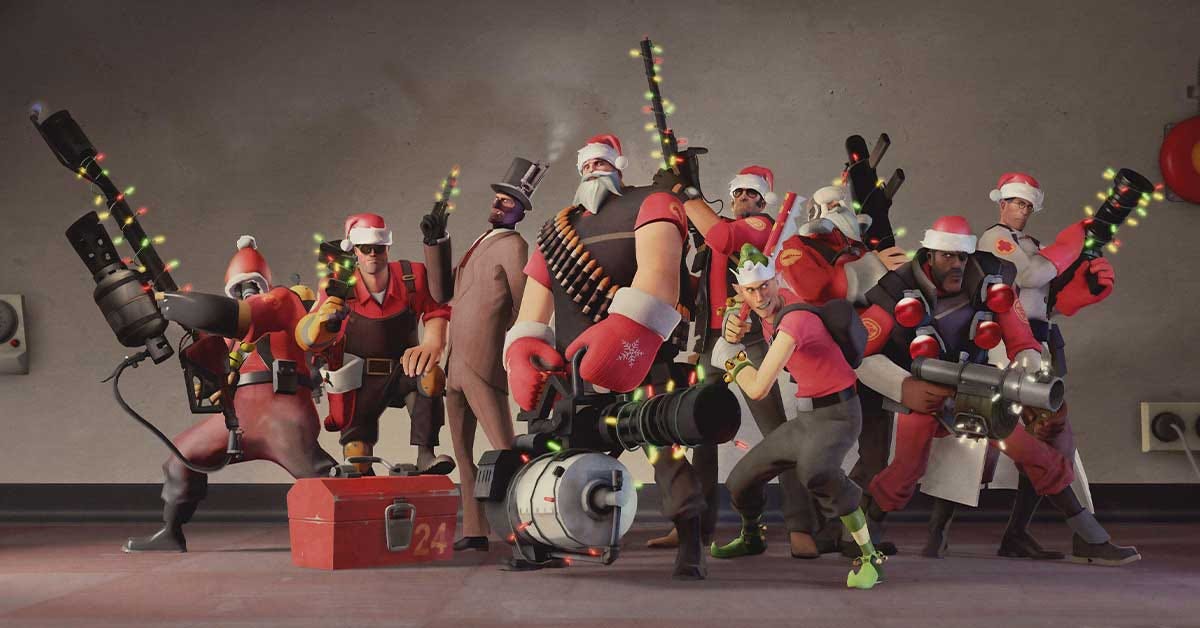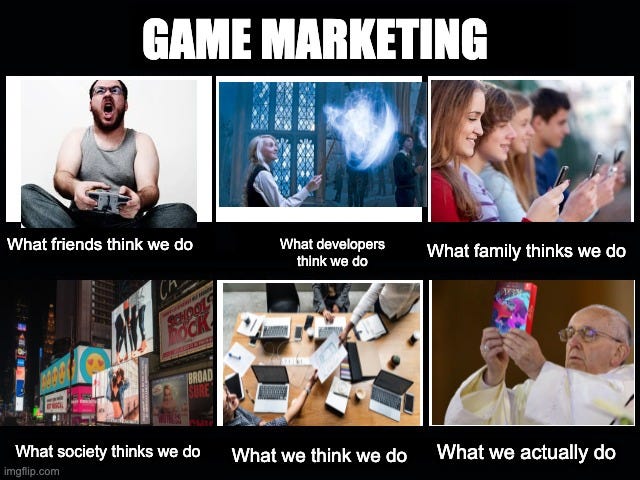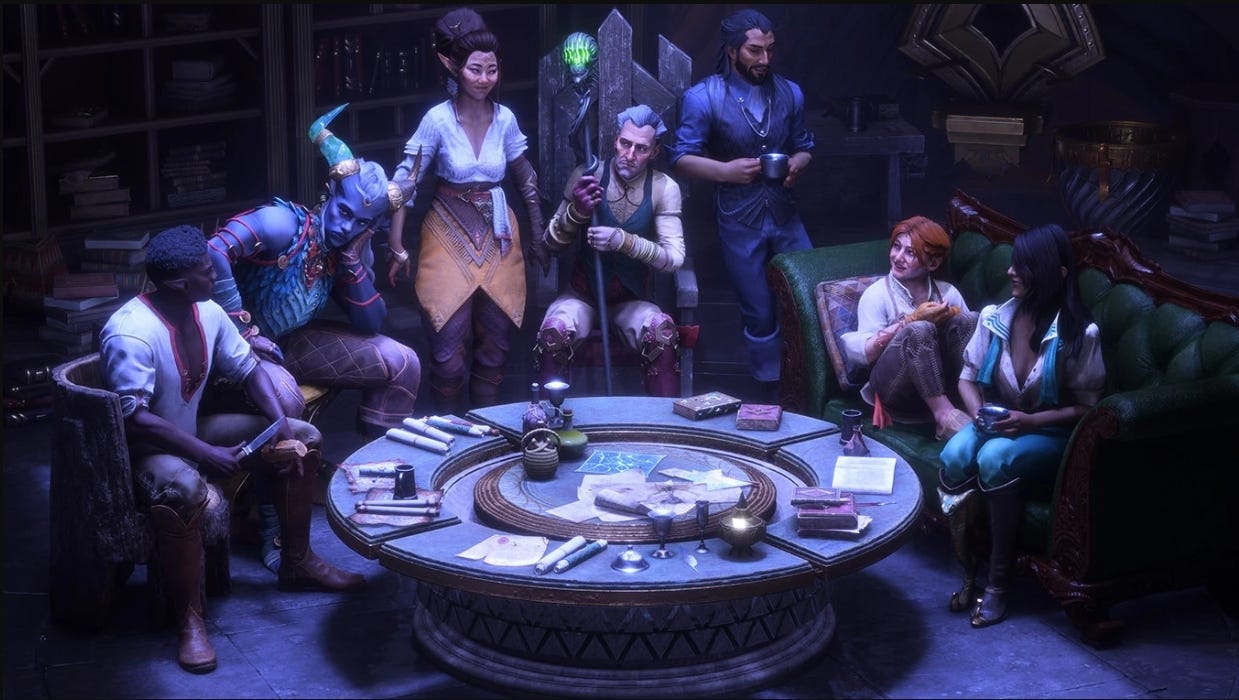Making and Marketing Your Indie Game on Steam in 2025
The Indie Dev's Guide to Winning on Steam in 2025
This will be my last article of 2024, so as an early Christmas gift enjoy this guide to success on Steam in 2025. Happy holidays and good luck with all your awesome games! 🎄
Making a successful indie game in today’s competitive market is no small feat, but it doesn’t have to feel overwhelming. Think of it like trying to build an epic LEGO set, challenging yes, but also a lot of fun when you have the right pieces and know where they go. Or maybe it’s more like putting together IKEA furniture for you, you don’t particularly enjoy every part of it but damn does it feel good when its finished and all the pieces are in the right place.
This blog is heavily inspired by two exceptional videos, "Marketing For Indie Games | Land a Hit Game" and "Making Successful Indie Games Is Simple (But Not Easy)" which provide invaluable insights into crafting and promoting games on Steam. If you’re at all interested in making and marketing a great game, these videos are must-watches. They’re filled with actionable advice and valuable insights from two indie focused industry veterans. This weeks article builds on their wisdom while incorporating some additional insights to help you succeed.
Making a Marketable Game on Steam
Understanding the Steam Audience
To create a marketable game, you first need to understand what Steam users want. The typical Steam audience values games that offer depth, anywhere around 20–40 hours of content, and are repayable. As for what genres are popular, Chris from How to Market a Game coined a phrase I love: "Crafty, Buildy, Simulation, Management Games”. These are games like Valheim, Enshrouded, Palworld, Factorio, Rimworld, Dwarf fortress, Manor lords, etc.
What makes these genres successful? They often include emergent gameplay systems that encourage replayability and offer players the freedom to explore and create their own experiences. This self-generating complexity keeps players engaged without requiring developers to craft every interaction manually. Think of these games as "toys" that provide endless opportunities for creativity, much like LEGO bricks. The less you have to rely on handcrafting every scenario and instead focus on creating systems that generate endless possibilities, the more your game will align with the expectations of Steam users.
AAA studios, with their vast resources, can give players the 20–40 hours of content they crave by creating massive, elaborate games like Baldur's Gate 3 and Dragon Age: The Veilguard. For indie developers, however, such a scale is unattainable. This is where the LEGO brick system focused approach to game development becomes the ultimate cheat code, allowing you to provide endless hours of engaging content without needing to painstakingly craft every moment. Incorporating systems like procedural generation or modular gameplay mechanics can vastly extend your game’s lifespan while providing fresh experiences for returning players.
Horror games, often with only a few hours of content, tend to do well too. Why? Idk I guess people like being scared. Maybe it’s easier game design wise? Or perhaps the highly marketable moments in horror games do the genre favors.
Make a Game That Both You and the Steam Audience Love
If you watch the videos mentioned above or read the previous section it’s easy to assume the takeaway is to make "Crafty, Buildy, Simulation, Management Games”. But that would be like reacting to the symptoms rather than the disease. The deeper meaning is not that you must make those games to be successful on Steam, but rather that those genre of games are the most popular because they’re very good at giving steam players what they want while being achievable to make for indie teams. This is likely why Rougelites/Rougelikes also had their time in the sun1.
Steam players crave games that have depth and provide dozens of hours of playtime & replayability. There are lots of game genres that can be creatively bent to fit that need.
Designing for Success
Genre and Fantasy Clarity
To stand out on Steam, your game must communicate its genre and fantasy, clearly. This starts with a compelling one or two-sentence pitch that encapsulates your game’s core fantasy and mechanics. This ensures your game’s appeal is immediately understandable, helping players connect with it faster. Here’s a few examples
Thronefall is a minimalist strategy game about building and defending your kingdom. Construct buildings during the day and fight alongside units at night.
Project Lost Island is a psychological VR horror game about unraveling the mystery of an abandoned island. Navigate dark, haunting environments, evade a relentless monster, and use light to uncover hidden stories that piece together the island’s tragic history.
SNØ is a minimalistic freeriding game. Push your limits for the high score, or simply explore the endless, serene wilderness.
Balancing Innovation and Optimization
When designing your game, you’ll face a choice between two fundamental strategies:
Strategy A: Improve upon existing concepts with a better or innovate design.
Strategy B: Create something totally unique but ensure it’s still relatable to players.
Both approaches have their merits and risks. Strategy A relies on perfecting a proven formula, ensuring players recognize and understand your game. Strategy B requires innovation that balances familiarity and novelty, allowing you to stand out while still attracting a sizable audience. The challenge is to strike a balance where your innovation doesn’t alienate players, but rather intrigues them with its fresh take on a known concept.
Hades is a good example of Strategy A. It only takes a few seconds of gameplay to recognize it as an action rougelike. From there the success comes in giving it a unique personality steeped in Greek mythology and excellently polished gameplay.
Balatro is a good example of Strategy B. It immediately hooks you in with the weird premise of being a “Poker Rougelike”. Combine the curiosity of players wondering how the f a poker rougelike is suppose to work with a banger implementation of that idea and you have explosive success of Balatro.
The Role of Prototyping
Prototyping is an essential tool for refining your game’s mechanics, testing ideas, and ensuring that your design decisions resonate with players. For most indie devs, prototyping provides a cost-effective way to explore gameplay possibilities without committing to large-scale production. By building quick, low-stakes versions of your game systems, you can:
Test Mechanics: Quickly determine what works and what doesn’t. Does your combat system feel engaging? Are the resource management elements intuitive? Prototyping allows you to answer these questions early.
Refine Core Loops: Focus on iterating the core gameplay loop to ensure it’s fun and addictive. If players enjoy the loop, you’re on the right track.
Validate Player Choices: Experiment with ways players interact with your systems, such as crafting, exploring, or combat, to find the most satisfying options.
Minimize Risk: Avoid investing significant resources into ideas that may not work by validating them in the prototype stage.
Prototyping isn’t about creating something polished; it’s about making sure you’re creating a fun game that players actually want, before committing significant resources to developing it. In the later stages its about discovering what makes your game compelling and identifying areas for improvement. A protype is a great risk averse way to identify early market signals.
Conducting Playtests
Playtesting is a vital step in gathering actionable feedback to improve your game’s design. When conducting playtests, clearly communicate the type of feedback you’re seeking. Whether it’s about gameplay mechanics, pacing, or visual clarity, targeted feedback will help you refine your game more efficiently.
Here’s a few ways you can run a playtest:
Steam Playtest Feature: Steam offers a built-in playtesting function that allows developers to manage playtest participants. You can find more details in Steam’s official documentation.
Itch.io: Itch.io provides an excellent platform for sharing your game with a broader indie audience. Set up a page for your prototype or playtest build to collect feedback from the vibrant community it offers.
File Hosting: While less ideal, hosting an executable file on platforms like Google Drive is another option. However, this method can deter potential testers, as players may be hesitant to download files from unknown studios.
Two criminally underrated uses of playtesting:
Playtests are also great marketing beats to drive community and wishlist growth.
Utilize playtests to test your demo build before putting it up on your Steam page.
Leveraging the Algorithm
Your primary job with marketing is to show Steam that players think your game is interesting. By bringing in enough traffic to your store page, you trigger the Steam algorithm, which then starts marketing your game for you. Steam promotes games through features like the Popular Upcoming list, where games with strong wishlist performance are showcased, and the Discovery Queue, which introduces your game to players based on their preferences. Triggering the Steam algorithm will significantly amplify your game’s visibility, turning early traffic into a snowballing effect of interest and sales. To make this happen, focus on generating pre-launch buzz through demos, content creators, and online festivals.
Marketing Your Game Effectively
The Power of Demos
A demo is one of the most powerful tools in your marketing arsenal. It allows potential players and content creators to experience your game firsthand, building excitement and driving wishlists. Here’s how to maximize its impact:
Use your demo to apply for online Steam sponsored festivals like Steam Next Fest as well as 3rd party festivals.
Share it with content creators that play your genre of game. The more you can show why their audience would enjoy seeing them play your game the higher chance you’ll get a reply. It’s worth contacting creators again after each major demo update (without be annoying).
Playtest your demo publicly before officially launching it on your Steam page to avoid a nasty surprise and ensure it’s as fun as possible.
Content Creators as Multipliers
Content creators can amplify your game’s reach exponentially. To effectively engage them, start by crafting personalized messages that demonstrate genuine interest in their content. Highlight why your game would resonate with their audience, and include specific features or elements that align with their style. Offering incentives like exclusive access or keys (to give their audience) to an older game of yours can create excitement and increase the likelihood of coverage. Additionally, ensure that any materials you provide, such as your press kit, is polished and ready for sharing, making it easy for creators to dive in and share their experience. To effectively engage them:
Reach out broadly: Contact 300–1,000 creators, focusing on those whose audiences align with your game’s genre and themes.
Prioritize organic promotion: Streamers and YouTubers are more effective when they play your game out of genuine interest versus sponsorship.
Leverage their feedback: Content creator’s (and their audience) insights can help you identify gameplay strengths and weaknesses as well positioning issues.
Online Festivals and Steam Events
Virtual festivals like Steam Next Fest provide front-page visibility and attract content creators. Ensure your demo is polished and ready to shine in these high-traffic events. Success in these festivals can significantly boost your game’s algorithmic visibility. Remember to prepare marketing assets, including trailers and visuals, to support your presence at these events. This is also a great time to contact content creators, update your demo, drop a new trailer, or utilized paid ads (if you have money to burn and know what your doing).
Social Media: Engagement Over Virality
Unless you go viral, social media will likely not be the primary driver of sales or wishlists, but it’s an invaluable tool for community engagement and feedback.
Test your game’s positioning: Share early prototypes, updates to your game, and specific features to gauge player reactions. This can reveal areas of confusion or untapped potential.
Engage with your audience: Use social media to learn what players like, what confuses them, and what excites them. Community engagement builds goodwill and helps refine your messaging.
Build interest organically: Focus on showcasing your game’s unique elements while not sounding like a corporate marketer. Authenticity resonates far more deeply with audiences than fancy marketing copy.
Final Thoughts
Creating the right game and marketing it on Steam requires a strategic balance of creativity, player alignment, and effective promotion. Start by designing a game that fits player expectations and offers replayability through emergent gameplay. Use demos, content creators, and online festivals to market your game effectively, and leverage social media for community engagement.
By combining innovation with proven strategies, indie developers can create games that stand out in a competitive market. Success comes not just from making great games but from making the right games and ensuring they reach the right audience.
I’m gonna go take a much needed vacation now and finally finish Dragon Age: The Veilguard, see you in 2025!
That and everyone hoping to replicate the success of Vampire Survivors








Loved it. Its a hard reality for many devs to realize that if youre just starting you really need to go with the flow and try to start with a game that sells. Is hard to probe that you are a studio that can create great games without having a hit. It also gives us game marketers more room to market a title by following working strategies that have worked for similar titles.
Great read! The big reach-out numbers were at first a bit surprising to me, but totally understandable if you consider how you both have to hit the luck of them even getting to your email in their probably overflowing email accounts and then ALSO have a game they actually want to play for their audiences.
Happy holidays, I'm looking forward to your posts in 2025 :)